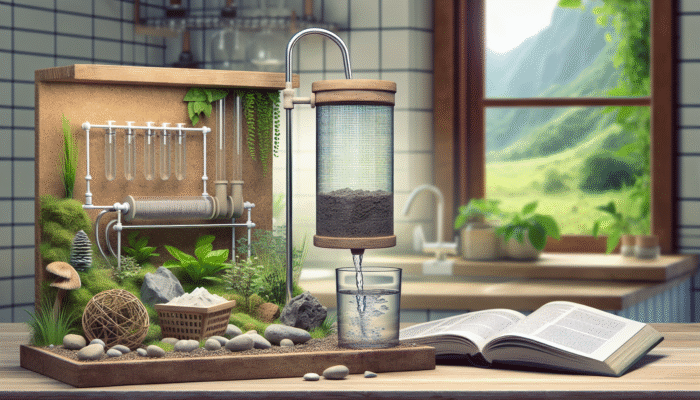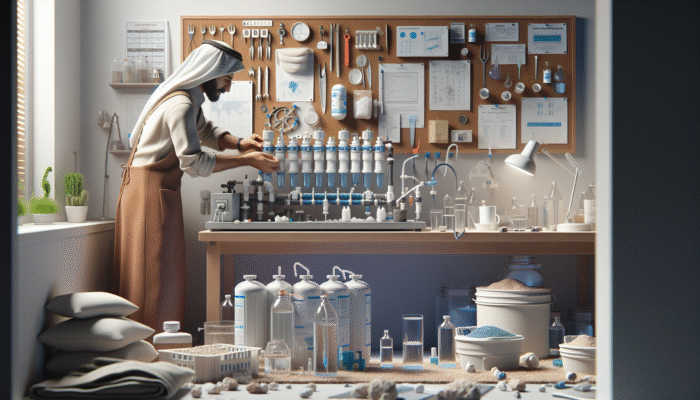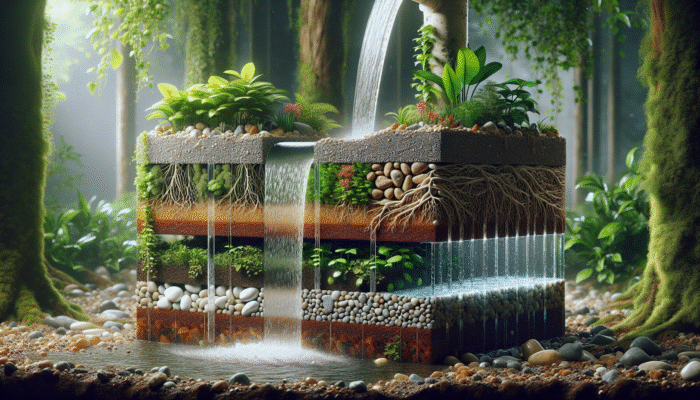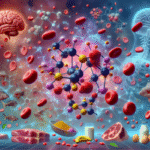Uncover the Secrets to Crafting Your Own Highly Effective DIY Water Filtration Systems
Grasping the Significance and Concept of DIY Water Filters

Envision a situation where you have uninterrupted access to clean and safe drinking water, liberating you from dependence on costly filtration systems or intricate machinery. DIY water filters provide a perfect solution to realise this vision! These homemade systems are ingeniously crafted to purify water through readily available materials and straightforward techniques. Whether situated in your garden or kitchen, they can transform your surroundings into a dedicated water purification zone. Engaging in this process not only renders water filtration a delightful and instructive endeavour but also serves as an excellent project for budding scientists and environmentally aware individuals eager to contribute positively to the planet.
Constructing a DIY water filter empowers you to take control of your water quality, whether you’re exploring the remote terrains of Patagonia or facing water scarcity in urban environments. By harnessing your creativity and ingenuity, you can repurpose everyday household items into effective filtration systems tailored to various settings and requirements, ensuring that you remain hydrated and safe, regardless of where life leads you.
The Extensive Advantages of Crafting Your Own DIY Water Filters
Why settle for bottled water when you can relish the satisfaction of creating your own DIY water filters? The benefits extend beyond mere financial savings; they offer immediate access to clean, purified water. In numerous regions worldwide, traditional filtration systems may be scarce due to infrastructural limitations or budget constraints. A DIY water filter emerges as a clever and practical solution that can be assembled swiftly to cater to your specific hydration needs.
Consider the scenario of residing in a remote location where access to clean drinking water seems like a luxury. With a simple homemade filter, you can utilise local resources to purify water from nearby streams or wells, cultivating a sense of independence and resilience in the face of various challenges. This capability empowers you to secure consistent access to safe drinking water, enhancing your self-sufficiency and boosting your confidence in managing your hydration needs.
Exploring the Multifaceted Benefits of DIY Water Filters
The advantages of constructing your own DIY water filters are both impressive and diverse. Primarily, these filters facilitate the removal of dangerous contaminants from your drinking water, significantly improving its safety. This process involves eliminating particulate matter, sediments, and harmful microorganisms that could adversely affect your health. Furthermore, a well-crafted filter can also enhance the flavour of the water, making it more pleasant and refreshing to consume.
Another considerable benefit is the ability to customise your filtration system according to specific needs. You can select materials based on your unique requirements or local environmental conditions. For example, if you find yourself in an area abundant in sand and charcoal, you can fashion a filter that optimally utilises these resources for maximum effectiveness. This degree of personalisation transforms the DIY water filter project into a tailored solution for your distinct water purification challenges.
Critical Maintenance Strategies for Ensuring Effective Functionality of Your DIY Water Filters

Maintenance is a vital, yet often underestimated, aspect of ensuring the effectiveness of DIY water filters. Regular upkeep guarantees that your filter functions effectively, consistently delivering safe drinking water. This involves routinely cleaning the filter materials to avert clogs and the proliferation of harmful bacteria. Depending on the specific materials used, some may necessitate more frequent replacement than others to maintain optimal performance and filtration efficiency.
Additionally, it is essential to consistently monitor the quality of your filtered water. Conducting water tests both before and after filtration allows you to assess the filter's performance and determine whether modifications are necessary. Establishing a routine inspection schedule can help you identify potential issues early, ensuring a continuous supply of clean water. Embrace the understanding that your filter is a dynamic system—it demands your attention and care, and in return, it will provide you with the invaluable resource of pure drinking water.
Choosing the Optimal Materials for Your DIY Water Filters
Employing Common Household Items for Efficient Filtration
Take a moment to survey your living space. You might be astonished by the abundance of everyday items that can be ingeniously repurposed into effective components of DIY water filters. Common materials like sand, charcoal, and fabric are not merely clutter; they can play crucial roles in your water purification journey.
For instance, sand acts as an excellent natural filtration medium, adept at trapping larger particles and sediments. Charcoal, recognised for its porous structure, effectively adsorbs impurities and toxins, thereby enhancing both the taste and aroma of the water. Even an old piece of fabric can serve as a pre-filter, capturing larger debris before the water is processed through finer filtration materials. The accessibility of these resources makes DIY water filters a compelling choice for anyone seeking to effectively cleanse their water supply.
Utilising Natural Materials for Enhanced Filtration Quality

Nature offers a plethora of materials that can elevate your DIY water filters to remarkable standards. Natural items like gravel, pebbles, and certain plant-based materials can significantly enhance the filtration process. Gravel can be strategically layered within your filtration system to create distinct zones, ensuring an organised method for eliminating contaminants from your water source.
Certain plants possess innate properties that aid in purification. For example, the roots of specific plants can function as natural filters, absorbing water and filtering out impurities during the process. By harnessing local flora, you can create a sustainable water filtration solution that not only cleanses but also nurtures a stronger connection to your environment.
Innovative Strategies for Sourcing Filter Materials
One of the most thrilling aspects of constructing DIY water filters is sourcing your materials. Often, a treasure trove of filtration resources exists right within your home or immediate vicinity. Look around your household: empty plastic bottles, used coffee grounds, and even kitchen sponges can be revitalised within your filtration system.
Your local environment can also provide an abundance of materials. A simple stroll through your garden or nearby parks may uncover sand, gravel, and pebbles just waiting to be collected. Additionally, the adventure of scavenging for materials adds an extra layer of excitement to the DIY process. By utilising easily accessible materials, you can reduce costs while maximising creativity in your water purification efforts.
Comprehending Basic Designs for DIY Water Filters
Constructing a Basic Sand and Charcoal Filter
Are you ready to embark on your first DIY water filter project? The sand and charcoal filter serves as an excellent starting point for novices. This uncomplicated design employs layers of sand and charcoal to effectively eliminate impurities from water, providing both an educational experience and functional results.
Begin by gathering a suitable container, such as a plastic bottle or jar. Cut the bottom off the bottle to create an opening for water to flow through. Start layering your materials: place a layer of small pebbles at the bottom to prevent sand from escaping. Next, add a generous layer of activated charcoal, known for its outstanding adsorptive properties. Follow this with a thick layer of sand, which effectively captures larger particles and sediments.
As water passes through these layers, it undergoes a gradual purification process, resulting in cleaner, safer water. Feel free to experiment! Adjust the thickness of each layer based on the initial quality of your water source and observe how it influences the filtration process. With this design, you'll gain valuable insights into water filtration while making a positive impact on your hydration habits.
Applying the Bottle Filter Technique
The bottle filter technique is a clever way to repurpose common household items into a valuable DIY water filter. All you need is a plastic bottle, some basic filtering materials, and a touch of patience. Start by cutting the bottle in half—this creates your filtration chamber.
In this design, layer your filtering materials, beginning with a piece of cloth at the bottom to act as a pre-filter. Follow this with layers of activated charcoal, sand, and gravel. Each layer performs a specific function, capturing contaminants of various sizes as water flows through.
Once your filter is assembled, pour water through the top of the bottle and watch as it trickles down, purified by the filtering layers. This method is not only practical but also serves as an excellent educational tool for children, imparting essential knowledge about water purification processes and the critical importance of having access to clean drinking water.
Designing a Sophisticated Multi-Stage Filtration System
If you're eager to elevate your DIY water filters to a more advanced level, consider constructing a multi-stage filtration system. This sophisticated design integrates various materials and stages to optimise the efficiency of water purification. Envision it as a comprehensive strategy for filtering, ensuring your water is as clean and safe as possible.
In a multi-stage filter, different materials target various types of contaminants. Start with a coarse layer of gravel to capture larger particles, then add layers of sand and activated charcoal to eliminate finer impurities and undesirable odours. You might even incorporate a layer of bio-sand or natural plant materials to introduce biological filtration into the equation.
The beauty of this design lies in its adaptability. Depending on your environment and the specific contaminants present in your water source, you can customise both the materials and layering strategy. This enhanced filtration significantly improves the quality of your drinking water, making it a valuable investment in your health and well-being.
Utilising a Ceramic Pot Filter for Efficient Purification
Introducing the ceramic pot filter into your DIY water filters arsenal! This method employs a porous ceramic pot to effectively filter out bacteria, sediment, and other impurities. Ceramic filters are renowned for their efficiency and durability, making them a popular choice in various communities around the globe.
To create this filter, you’ll need a ceramic pot with a lid and a clean collection container. Position the ceramic pot upside down in the collection container. Fill the pot with water, and as it seeps through the porous walls, contaminants are captured within the ceramic material. The result? Fresh, clean water that is safe for consumption.
One of the standout features of the ceramic pot filter is its ability to eliminate harmful pathogens without the need for additional chemicals or complex processes. This method highlights the beauty of simplicity within DIY water filters, enabling anyone to access safe drinking water with minimal effort.
Exploring Advanced Techniques for DIY Water Filtration
A Deep Dive into Ceramic Pot Filters
Examining ceramic pot filters more closely reveals a compelling and effective method for ensuring clean water. These filters utilise naturally occurring materials that boast excellent filtering capabilities. Their porous structure allows water to flow through while effectively trapping harmful bacteria and other contaminants.
Although creating a ceramic filter may necessitate more effort than basic models, the results are undoubtedly worth it. With proper installation, a ceramic pot can serve as a long-lasting filtration solution, capable of filtering hundreds of litres of water before requiring replacement or cleaning.
The versatility of this technique is noteworthy—it can be employed in various settings, from rural communities seeking sustainable solutions to urban residents seeking eco-friendly alternatives. By harnessing the power of ceramics, you can create a highly effective DIY water filter that prioritises both health and sustainability.
Leveraging Solar Disinfection for Enhanced Water Purification
Have you ever considered the sun as a powerful ally in your quest for clean water? Solar disinfection, or SODIS, is an innovative technique that combines filtration with solar energy to enhance water purification. This method utilises UV rays to eliminate harmful microorganisms, making it an excellent addition to your DIY water filters toolkit.
To implement solar disinfection, simply fill clear plastic bottles with filtered water and place them in direct sunlight for several hours. The UV radiation penetrates the water, effectively neutralising a wide range of pathogens. When used in conjunction with another filtration method, such as a sand and charcoal filter, solar disinfection can significantly enhance overall water safety.
This technique is especially valuable in regions where electricity or conventional purification systems are limited. It exemplifies how DIY water filters can be adapted to utilise natural resources, ensuring that clean water is accessible to everyone, regardless of location or economic status.
Recognising the Advantages of BioSand Filters
Imagine a filtration system that beautifully melds technology with nature! The bio-sand filter is a remarkable engineering achievement that employs biological processes within the sand to purify water, offering a sustainable long-term solution. This method functions by cultivating a layer of beneficial microorganisms on the surface of the sand, which effectively break down harmful contaminants.
To construct a bio-sand filter, you’ll need a robust container filled with layers of sand and gravel. After the initial setup, allow the filter to settle for a few days to facilitate the development of the microbial layer. Once established, this filter can remove viruses, bacteria, and other pollutants, providing you with a reliable source of clean drinking water.
The bio-sand filter exemplifies nature's design principles, illustrating how ecosystems can inform and enhance our water purification efforts. With a bit of patience and care, you can create a DIY water filter that not only delivers clean water but also supports ecological balance.
Maximising the Efficiency of Activated Carbon Filters
Enter the realm of activated carbon filters, where chemistry meets practicality in your pursuit of clean drinking water. Activated carbon is renowned for its extraordinary capacity to adsorb contaminants, making it a formidable ally in the domain of DIY water filters. This material can substantially enhance both the safety and flavour of your water.
Creating an activated carbon filter is a straightforward process. Layer activated carbon within your filtration system, allowing water to flow through and interact with this remarkable material. As the water passes, contaminants adhere to the carbon, resulting in a fresher and cleaner final product. This method is particularly effective for addressing chemical pollutants or unpleasant tastes that may be present in certain water sources.
Combining activated carbon with other filtering materials amplifies its efficacy, creating a multi-layered approach to water purification. This versatility makes activated carbon filters a popular choice in both DIY projects and commercial applications, showcasing their reliability in delivering safe drinking water.
Guaranteeing Optimal Performance of Your DIY Water Filters
Regular Cleaning and Replacement of Filter Materials
Your DIY water filters are only as effective as the materials they contain! Routine cleaning and replacement of filter materials are crucial for ensuring consistent performance. Depending on the type of filter you’ve constructed, these tasks may vary, but the underlying principle remains the same: a well-maintained filter is a high-performing filter.
Start by establishing a routine for inspecting your filter components. Some materials, such as activated carbon, may require replacement every few months, while others, like sand, can last longer with proper care. Cleaning is equally vital; rinsing out the materials or replacing them periodically can help prevent clogging and bacterial growth, ensuring the filter operates at peak efficiency.
Monitoring the flow rate of your filter can also serve as an indicator of when maintenance is necessary. If you observe a significant decline in water flow, it’s time to inspect, clean, or replace the materials. By prioritising maintenance, you ensure the longevity and effectiveness of your DIY water filters.
Consistent Monitoring of Water Quality
Understanding the quality of your water is paramount to ensuring safe drinking conditions. Regularly monitoring water quality before and after filtration enables you to assess the performance of your DIY water filters. This proactive approach empowers you to make informed decisions regarding your water purification processes, leading to safer drinking water.
Begin by acquiring simple water testing kits available online or at local retailers. These kits can test for common contaminants such as bacteria, chlorine levels, and pH balance. After filtering, compare the results to gauge how effectively your filter is performing.
If you discover that your filtration system is not adequately removing contaminants, it may be time to reassess your materials or design. This ongoing process of monitoring and adjusting ensures that you are consuming the cleanest water possible—an essential aspect of maintaining your health and well-being.
Troubleshooting Common Filtration Issues
Even the most efficient DIY water filters can encounter challenges. Common problems such as slow filtration rates or poor water quality may arise, but don’t be disheartened! Addressing these issues is a crucial part of the process and an opportunity to improve your system.
If you notice that your filter is taking longer to process water, it may be time to check for clogs or blockages within the materials. Cleaning or replacing the filtering substances can often resolve these issues. Conversely, if the water quality is lacking, evaluate the types of materials you’re currently using. Consider upgrading to higher-quality components or adjusting the layering for enhanced filtration performance.
Do not let these challenges discourage you; they present opportunities for growth and experimentation. By troubleshooting common issues, you’ll not only improve your filter’s efficiency but also deepen your understanding of the filtration process itself, encouraging a greater appreciation for the science behind clean water.
Establishing a Regular Inspection Schedule
Creating a regular inspection routine for your DIY water filters acts as a safeguard against potential issues. Just as you wouldn’t neglect the maintenance of your vehicle, your filtration system deserves the same level of attention. Set up a routine check every few weeks to assess the overall condition of your filter.
During these inspections, look for signs of wear and tear, clogs, or any changes in water output. Transform this task into a family activity or a fun weekend project—this way, everyone can participate in ensuring clean water is always available. This collaborative effort not only enhances your system's efficiency but also fosters an understanding of the importance of clean water.
Building this habit can lead to continuous improvement and a deeper appreciation for the technology behind your DIY water filters. It’s about cultivating a culture of care, ensuring that you always have access to safe drinking water when you need it most.
Upgrading Filtering Components for Peak Performance
As your knowledge of DIY water filters expands, consider upgrading filter components to enhance overall water quality and longevity. Over time, the demands on your filter may change, and adapting to these alterations can significantly improve performance.
Explore higher-quality materials—switching from regular charcoal to activated carbon can make a remarkable difference in contaminant removal efficiency. You might also experiment with additional layers or alternative filtering techniques. For instance, incorporating natural flocculants can assist in coagulating impurities for easier removal, streamlining the filtration process.
Embrace the spirit of experimentation! As you deepen your understanding of water filtration, you'll discover new methods and materials that can elevate your DIY water filters. This continuous upgrading process ensures your filter remains effective, providing you with the clean, safe drinking water you deserve.
Placing a Premium on Safety in Your DIY Water Filters
Ensuring the Effectiveness of Your Filtration System
Safety should be your utmost priority when constructing DIY water filters. Employing appropriate techniques and materials is crucial for ensuring that your filter effectively removes contaminants. Be meticulous in selecting the types of materials you use and their filtering capabilities.
Always source high-quality components to prevent the introduction of additional toxins into your water supply. Furthermore, familiarise yourself with the filtration process to understand the limitations of your design. Some filters may not eliminate specific pathogens or chemicals; thus, conducting thorough research and possibly incorporating multiple filtration methods can enhance overall effectiveness.
Regular testing serves as a vital part of this process, helping you ensure the filter’s ongoing performance and providing peace of mind, allowing you to drink confidently from your DIY water filters.
Preventing Contamination of Filtered Water
Once you’ve successfully filtered your water, the journey doesn’t end there. Proper handling and storage of filtered water are crucial to preventing recontamination. Be mindful in choosing your storage containers. Opt for clean, food-grade materials to avoid leaching harmful chemicals back into your water supply.
When transferring water to storage containers, use sanitized utensils and avoid contact with the inner surfaces of the containers. Ensure that all storage vessels are tightly sealed to keep out dust and bacteria, safeguarding the quality of your water.
Implementing these straightforward safety measures will help ensure that the water you’ve diligently purified remains safe for consumption. In a world where clean water is essential, taking these precautions can make all the difference for you and your family.
Recognising Health Risks and Taking Precautions
Understanding the potential health risks associated with contaminated water is vital for ensuring your safety. Impure water can harbour various pathogens, including bacteria, viruses, and parasites that pose serious health threats. Familiarise yourself with the specific contaminants that may be prevalent in your area, as geographical differences can significantly influence water quality.
Taking precautions such as regular water testing and ensuring proper filtration methods can substantially mitigate these risks. If you’re uncertain about the efficacy of your DIY water filters, consider seeking professional guidance or conducting a more thorough examination of your water quality.
By remaining informed and proactive, you can navigate the complexities of water purification and safeguard your health. Remember, access to clean drinking water is non-negotiable, and your DIY water filters can play a crucial role in ensuring you have safe access to it.
Championing Sustainability Through DIY Water Filtration
Understanding the Environmental Impact of DIY Water Filters
In a world increasingly focused on sustainability, DIY water filters emerge as symbols of eco-friendliness. By utilising local and natural materials for your filtration systems, you not only reduce your environmental footprint but also foster a culture of responsible resource management. Sourcing materials from your surroundings helps minimise waste and encourages sustainable practices.
Creating your own filters fosters a mindset that values conservation and innovation. When you become aware of the resources available in your environment, you develop a connection with nature—a powerful reminder of our dependence on the ecosystem.
Integrating sustainability into your water purification efforts can lead to broader positive effects, both locally and globally. By sharing your knowledge and techniques with others, you can ignite a movement towards eco-friendly water solutions, ensuring future generations have access to clean drinking water.
Frequently Asked Questions
What materials are most effective for DIY water filters?
Commonly used materials include sand, charcoal, gravel, and cloth. Each material plays a unique role in filtering contaminants, and combining them can significantly enhance overall effectiveness.
How frequently should I replace the filter materials?
The frequency of replacement varies based on usage and water quality. Generally, activated carbon should be replaced every few months, while sand and gravel may last longer with adequate maintenance.
Can I use a DIY water filter to purify river water?
Yes, but caution is necessary. Always pair filtration with additional methods such as boiling or solar disinfection to ensure all pathogens are effectively removed.
What is the most effective method for cleaning my DIY water filter?
Cleaning involves rinsing materials with clean water, replacing any clogged items, and sanitising the container to prevent bacterial growth.
Are DIY water filters safe for use?
When constructed and maintained correctly, DIY water filters are indeed safe. Regular testing and monitoring help ensure ongoing safety and efficacy.
How can I test the effectiveness of my DIY water filter?
Utilise water testing kits to measure contaminants before and after filtration. This practice will inform you about the filter’s performance and reliability.
Can I create a DIY water filter without using activated carbon?
Yes, while activated carbon enhances taste and removes certain chemicals, other materials such as sand and gravel can still provide basic filtration capabilities.
Is boiling water necessary after filtering?
Boiling is advised, especially for untreated sources, as it effectively kills any remaining pathogens that filtration may not eliminate.
What advantages do ceramic pot filters offer?
Ceramic pot filters effectively remove bacteria and sediment, are durable, and can provide a long-term solution for ensuring safe drinking water.
How can DIY water filtration contribute to sustainability efforts?
Utilising local and natural materials for filtration minimises environmental impact and fosters a culture of conservation and resourcefulness in your community.
Follow our journey on X for more insights!
The post DIY Water Filters: Essential Guide to Clean Water appeared first on Survival Bite.
The Article DIY Water Filters: Your Essential Guide for Clean Water Was Found On https://limitsofstrategy.com

